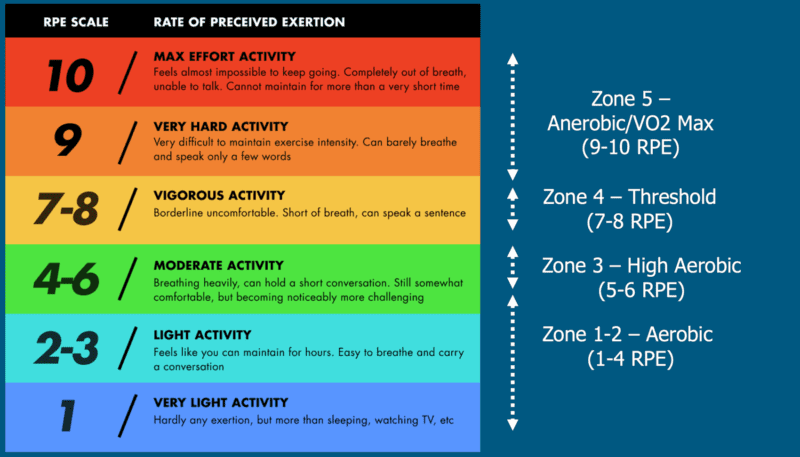How to Run Hill Repeats? (4 Amazing Hill Running Workouts)
Do you wish to be a faster and more efficient runner? Add hill repeats into your training plan.
In this article, you will learn everything you need to know about hill repeats.
What are hill repeats?
Hill repeats are a type of hill training that includes running uphill for a certain number of repetitions. Recovery is walking or easy jogging downhill. They are a specific type of strength training that improves speed, stamina, endurance, and neuromuscular coordination.
Research conducted on 20 long-distance runners has shown that six weeks of high-intensity uphill interval running improves the running economy.
On average, runners were 2% faster at 5K runs.
There are numerous variants of hill repeats, depending on the grade and length of the hill.
However, what they do have in common is the way they are performed.

Hill repeats include:
- Warm-up – 10 to 15 minutes of easy jogging on flat terrain, mobility exercises and dynamic stretches, and strides
- The main part of the training – a certain number of uphill running intervals
- Cooldown – 10 to 15 minutes of easy jogging on flat terrain
Hill repeats can be divided by duration, that is, by length into:
- Short hill repeats
- Long hill repeats
Short hill repeats
Short hill repeats are done on distances of 50m to 200m, and they generally take 15 to 90 seconds.
They do not take long and thus allow for higher intensity than long hill repeats, while the energy is mainly provided by the anaerobic glycolytic (lactic acid) system.
Energy is released without the presence of oxygen through glycolysis (glycogen degradation).
Short hill repeats are done on slopes with grades of 5-15%.
If you want to do hill repeats with a medium incline, you will need a slope with a grade of 5-6%; and if you want steeper inclines, then you will need a slope with a grade higher than 7%.
Short hill repeats increase speed, power, and strength, while also activating fast-twitch fibers and increasing the maximal oxygen uptake (VO2 max). According to the rating of perceived exertion (RPE) scale, they are very exerting (8-9 RPE).
Short hill repeats are modifiable and make great training for sprinters, middle-distance runners, and long-distance runners.
Example of short hill repeats defined by distance
1. Warm-up – 2 km of easy jogging on flat terrain
2. Main part of the training – 10 x 100m uphill; recovery is walking downhill
3. Cooldown – 1,5 km of easy jogging on flat terrain
Example of short hill repeats defined by time
1. Warm-up – 10 minutes of easy jogging on flat terrain
2. Main part of the training – 2x 1 minute uphill; recovery is walking downhill
3. Cooldown – 10 minutes of easy jogging on flat terrain
Long hill repeats
Long hill repeats are done on distances of more than 200m, and they generally take more than 90 seconds.
They are less intense than short hill repeats, while the energy for them is mainly provided by the aerobic system.
Energy is released with the presence of oxygen, through the oxidation of nutrients.
Long hill repeats are usually done on slopes with grades of 3-5%.
The steeper the slope is, the faster you get tired and the harder it becomes to maintain proper running form. Because of that, you should choose slopes with lower grades.
The goal of long hill repeats is to improve speed endurance, endurance, and fatigue resistance. According to the rating of perceived exertion (RPE), they are exerting (6-7 RPE).
Long hill repeats make great training for middle-distance runners and long-distance runners.
Example of long hill repeats defined by distance
1. Warm-up – 2 km of easy jogging on flat terrain
2. Main part of the training – 3 x 4 x 300m uphill; recover between the repetitions with some easy jogging, and walk downhill between the series
3. Cooldown – 1,5 km of easy jogging on flat terrain
Example of long hill repeats defined by time
1. Warm-up – 10 minutes of easy jogging on flat terrain
2. Main part of the training – 2 x 5 x 2 minutes uphill; recover between the repetitions with some easy jogging, and walk downhill between the series
3. Cooldown – 10 minutes of easy jogging on flat terrain

How to do hill repeats?
In order to successfully perform hill repeats, follow these tips:
1. Keep your body straight
Keep your body straight, slightly leaning forward at your hips, not the waist. Make sure that you are not hunching.
Leaning too far forward reduces the range of motion of the hip flexors and makes you unable to properly grab the surface, reducing your running efficiency.
2. Look straight ahead
Look straight in front of you, and not at your feet.
That way, you won’t hunch over, you will have a greater flow of oxygen, and you’ll be able to breathe more easily.
Furthermore, you will be able to focus on the slope ahead of you.
3. Work more intensely with your arms
Don’t forget to move your arms. Your arms should form a 90-degree angle at the elbow, and swing straight back and forth, not across your body.
When it becomes difficult, concentrate on the way you work with your arms because your legs will follow the rhythm of your arms to maintain balance, allowing you to maintain the rhythm itself more easily.
4. Shorten your stride and increase cadence
While running uphill, do not overstride because you will not be able to land your foot beneath you, but ahead of you.
Because of that, you will spend more energy and will not be effective.
Take smaller steps while running uphill. The stride length will naturally shorten, due to gravity and increased incline.
5. Focus on running by effort
While running uphill, focus on effort, not on the running pace. Run with the 5K effort, not with the 5K pace.
6. Run slowly downhill to the starting point
If your recovery between hill repeats consists of running downhill, monitor your pace and form.
Run downhill at a slower, more controlled pace. Check your form.
When you run downhill, a lot of force is transmitted onto your quadriceps and lower leg muscles, so don’t lean too far backward, and don’t increase the stride length. Because of that increases the braking force and the risk of injury.
Just like when running uphill, maintain a straight position, slightly leaning forward at your hips, and land your foot directly beneath you.
How to warm up before the hill repeats?
Before the hill repeats, it is important to warm up properly.
Read more: 7 Reasons Why You Need to Warm-Up Before Running
Warm-up before hill repeats include:
- Easy jogging
- Mobility exercises and dynamic stretches
- Strides or the first hill repeat at a lower intensity
Start your warm-up with easy jogging for around 10 minutes. A
djust the duration of your warm-up according to your fitness level, weather conditions, and the type of training that you will be doing.
Tip
Run on flat terrain during a warm-up before hill repeats.
If you will be doing higher-intensity training, your warm-up should be longer and include all the components.
In that case, you should also do the mobility exercises and dynamic stretches, along with a couple of strides, or the first hill repeat at a lower intensity.
Read more: Warm-up Before Running [Ultimate Guide]
How steep should hill repeats be?
Hill repeats are usually performed on slopes with grades between 3% (medium) and 10% (steeper). Slopes have a considerable effect on numerous factors, such as:
1. Running pace
2. Stride length
3. Cadence
4. Ground contact time
When running on a lower incline, the running pace is faster, strides are longer, cadence is increased, and ground contact time is shorter.
A steeper incline means a slower running pace, strides are shorter, cadence is decreased, and ground contact time is longer since more energy is required to overcome it.
Therefore, if you wish to increase strength and running speed, choose a steeper slope. However, in doing so, make sure that the slope isn’t too steep and that it is shorter because, otherwise, the running pace will be too slow.
Tip
It is hard to know the exact grade of a slope if you do not have a smartwatch or know the track well. In that case, pick a slope of your choosing and adjust the running pace to the slope itself.
How fast should you run hill repeats?
Running pace during hill repeats depends on the level of effort, so do not bother yourself with pace.
Shorter hill repeats are done at a higher intensity and very high exertion (8-9 RPE), with an emphasis on the improvement of speed and strength.
Longer hill repeats are done at a lower intensity and high exertion (6-7 RPE), with an emphasis on the improvement of speed endurance, and endurance.

How many hill repeats should you do?
The number of hill repeats depends on your fitness level, whether you are a beginner or a more advanced runner, and the type of training that you will be doing.
If you are a beginner, start with 3 to 4 repetitions and gradually increase the number of repetitions. And if you are a more advanced runner, then the number of repetitions can be as high as 10, but that still depends on the type of slopes in question.
How long are recovery periods between hill repeats?
Duration and the way of recovery between hill repeats depend on the training goals, hill repeat intensity, and length.
If the training goal is to improve endurance, recovery periods between hill repeats should be shorter; and if the goal is to improve speed, you should recover longer.
Likewise, higher-intensity efforts require longer recovery periods.
Recovery between hill repeats can consist of walking or easy jogging downhill or stopping in place completely.
When you are doing longer hill repeats, avoid walking downhill so that your recovery does not last too long, and you do not cool too much. Run easily downhill and walk in between series.
Short hill repeats are more intense and thus require longer recovery, so you should walk downhill.

What are the benefits of hill repeats?
Hill repeats have numerous benefits as they:
1. Improve strength
2. Improve speed and stamina
3. Improve endurance and fatigue resistance
4. Increase cadence (number of steps in a minute)
5. Improve running technique
6. Improve running economy
7. Reduce the risk of injury
8. Improve neuromuscular coordination
9. Break the monotony of training
10. Prepare you for a race
11. Improve mental strength
Research has shown that 12 weeks of hill running can significantly improve speed endurance and endurance, lower the resting pulse rate, and improve the maximal oxygen uptake (VO2 max) of middle- and long-distance runners.
Read more: 14 Hill Running Benefits
Do hill repeats make you faster?
Hill repeats will make you a faster runner. By overcoming resistance provided by your body weight and gravity, you activate your lower body muscles more efficiently, strengthening them in the process and increasing your overall strength.
As you strengthen your hamstrings and gluteal muscles, you will be able to grab the surface beneath you more efficiently and, therefore, run faster.
Also, uphill running is performed on the balls of your feet. That way you build strength that enables you a more explosive push off from the ground. By running on the balls of your feet, you spend less time on the surface and, as such, you run faster.
Are hill repeats good for marathon training?
Hill repeats are great training during a marathon preparation. Include hill repeats into your marathon training plan in order to reduce the risk of injury and to improve your speed, speed endurance, and endurance.
How often should you do hill repeats?
Since they are a form of high-intensity training, it is enough to do hill repeats once a week. By doing multiple hard and demanding training per week, you increase your risk of injury and overtraining, not allowing the body to recover.
How to add hill repeats to your training plan?
Hill repeats are generally done once a week since they are quite demanding and require recovery in order to avoid overtraining. Because of that, do not plan long run or other types of more intensive training the day before or after hill repeats.
Include long hill repeats into the early or middle phase of your training plan, in order to build the necessary aerobic condition and improve your stamina, and endurance.
Include short hill repeats in the middle or later phase of your training plan. It is necessary to build aerobic conditions before including them in your training plan, in order to reduce the risk of injury.
Who should do hill repeats?
Hill repeats are a great form of training for all types of runners, from sprinters to long-distance runners, from beginners to advanced runners.
Since they can be modified, they can be done by beginners.
However, if you are a beginner, you should be careful.
Start with shorter slopes with a lower incline. Do hill repeats of lower intensity, focusing on proper running technique and fewer repetitions.
Gradually increase intensity, distance, and number of repetitions.
If you are prone to injury, hill repeats are a safer way to improve speed and strength than running on flat terrains, like a road or track. Due to the lower impact force on the joints, the risk of injury is reduced.
Hill repeats are great training for all runners because running uphill forces you to adopt a more proper technique than when you run on flat terrain:
- You hold your body upright, slightly leaning forward at your hips
- You naturally raise your knees higher
- You do not run on your heels but on the balls of your feet
- You move your upper body optimally, meaning that you work with your arms more intensively
As such, by doing hill repeats, you will improve your running technique.
Therefore, you will also run better on flat terrain, resulting in a better running economy (you will be able to keep the same pace while losing less energy).

How do you do hill repeats without hills?
If you live in an area where there are no slopes, you can do hill repeats on a treadmill.
The advantage of doing hill repeats on a treadmill is:
- Setting the exact grade and length of a slope – you can create a slope with the length and grade of your choosing
- Does not require you to run downhill – in order to recover between repetitions, it is not required of you to return downhill to your starting point, you can rest by running on flat terrain while controlling the time of your recovery
Despite its advantages, I am not a fan of doing hill repeats on a treadmill.
If you have a chance, choose running in nature.
Although it is on the one hand an advantage that you can rest without running downhill, it is also a disadvantage.
Your body does not adjust to that type of stress, and most races that include slopes also require you to run downhill.
For shorter hill repeats choose a grade between 6-10%, and for longer hill repeats choose a grade of 3-5%.
For recovery between hill repeats, lower the grade to 0% and lower your pace in order to rest for the next hill repeat.
After a set number of hill repeats, for a cool down, run at a slower pace for around 10 minutes on flat terrain.
If you want to know more about hill training, read the article Hill Training (8 Best Hill Running Workouts).

Matea Matošević
Hi, I’m Matea! I’m an Olympic Marathon Runner, founder, and writer behind OLYRUN.com. On this site, I provide help in the form of my knowledge and experience to all who love running and active living. Read more…

